本文由 WaterScales arquitectos 授权mooool发表,欢迎转发,禁止以mooool编辑版本转载。
Thanks WaterScales arquitectos for authorizing the publication of the project on mooool. Text description provided by WaterScales arquitectos.
WaterScales arquitectos:古老的阿拉巴尔村庄(Arrabal)环绕着阿洛拉(Álora)城堡,呈弓形盘踞在Sierra del Hacho山脉上。阿拉巴尔村庄有着丰富有趣的历史,这段历史与摩尔人抵抗天主教徒的斗争以及弗拉明戈歌曲“马拉加”的创作有关。为了翻新改善城堡周围的环境,当地举办了一场建筑竞赛以促进更新公共设施,吸引潜在的游客群体。设计师提出了一项名为“挂毯比例1:1”(tapestry scale 1:1)的干预措施,它吸纳了文化景观所蕴含的能量。这个石头地图能够引导参观者们看见、发现、了解并体验当地的文化景观。整个设计的第二阶段方案是通向城堡的一部分,被称为360º观景台。
WaterScales arquitectos: Álora, with its Castle surrounded by an ancient Arrabal, is placed as a bow of the mountainous landscape of Sierra del Hacho. The village has a rich and interesting history related to the Moorish defence against Catholics and about the creation of the malagueña, a kind of flamenco song. It took place an architectural competition for refurbishing and renovating the castle surroundings in order to renovate public facilities as well as attract new travellers. We purposed an intervention called “tapestry scale 1:1” which captures the energy of its cultural landscape. It would be a kind of stone map which would help the visitant to see, discover, know and experience the cultural landscape. The second phase of the complete intervention has been a part of the path toward the Castle and the so called viewpoint 360º.
▼通向城堡的360º观景台 The pathtoward the Castle and the so called viewpoint 360º.
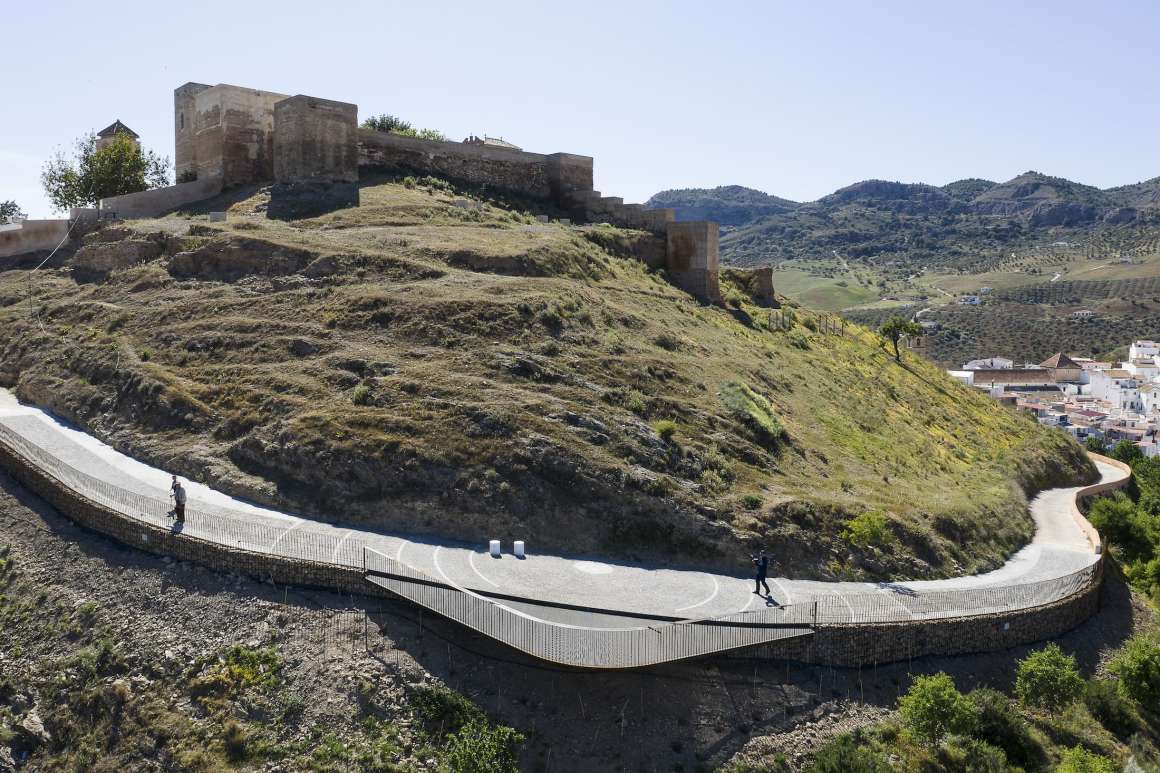
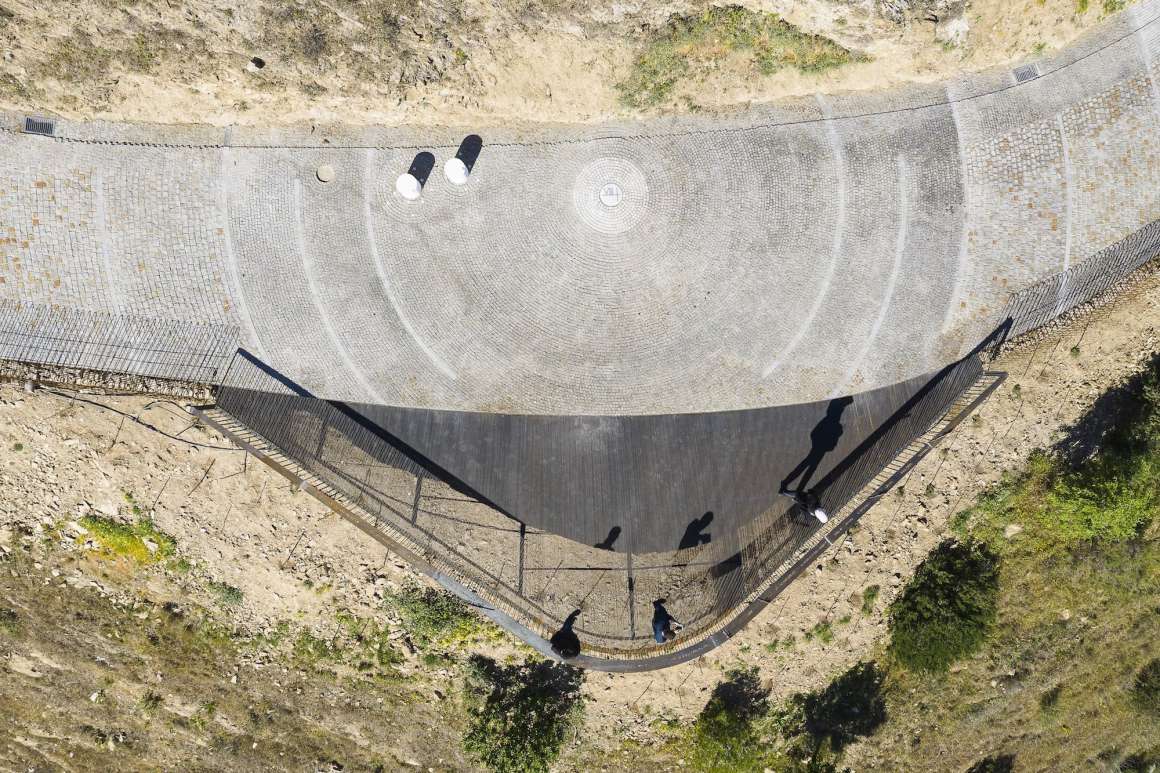
通往城堡的环山道路将城堡和阿拉巴尔村庄的主广场相连,这条路也叫“苦路”(指天主教的一种模仿耶稣被钉上十字架过程重现的宗教活动),其中第八站是环山道的主要停留处,有一个凸出的弧形观景平台,能将阿洛拉的丰富美景尽收眼底。
The path toward the castle which surrounds the Cerro de las Torres (Towers’ hill) joins the Castle with the Plaza de la despedía (main square of the Arrabal). In its main curve, where the 8th via crucis stop is, appears the viewpoint showing Alora’s landscape plenitude.
▼半山腰的一侧坐拥自然景观,另一侧可以俯瞰当地的文化景观 On one side, there is the natural landscape, on the other is cultural landscape.
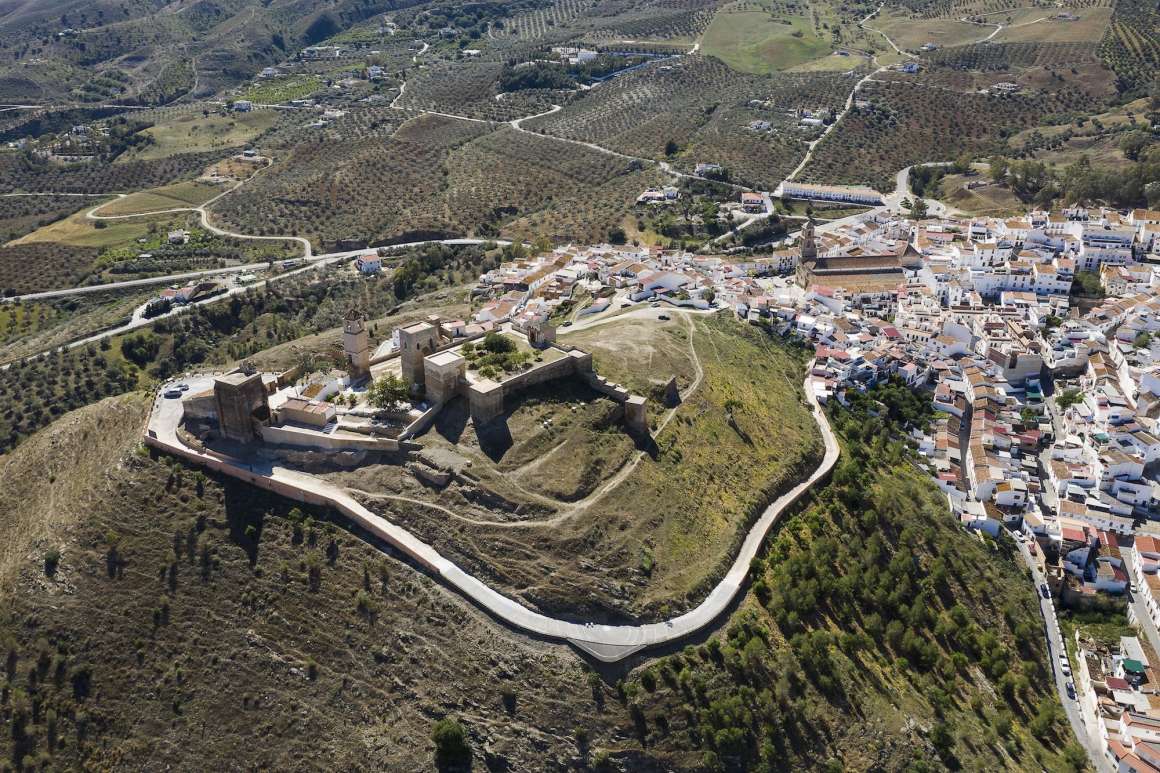
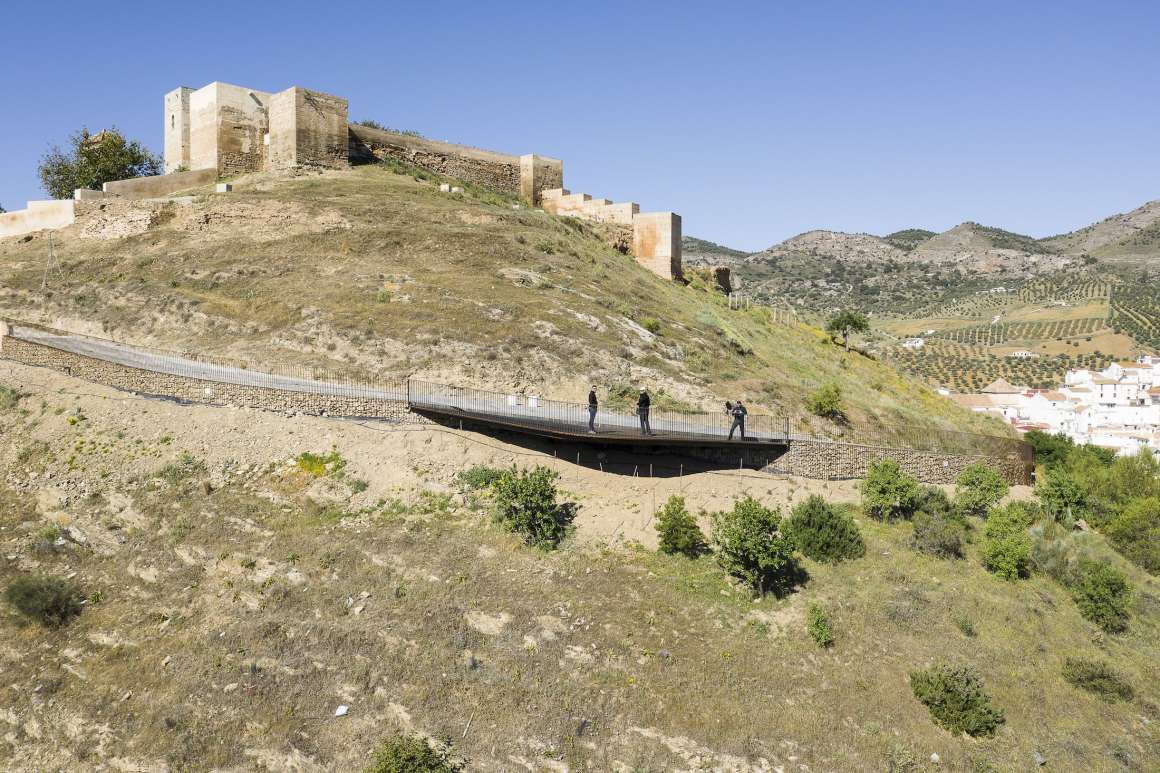
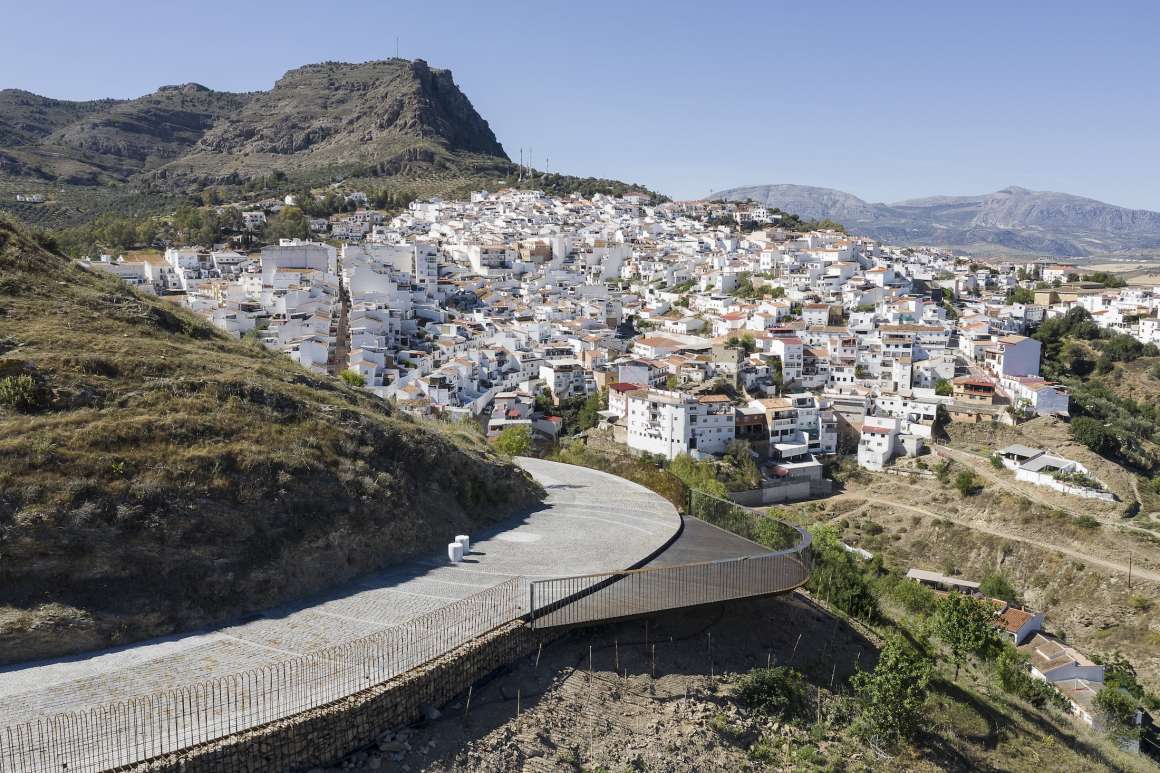
靠近“苦路”第八站的道路铺装纹理有所变化,附近设有两个大理石座椅和一个360º的动态观景台。这里一侧坐拥Guadalhorce山谷、盆地和果园的自然景观,另一侧可以俯瞰当地的文化景观:Jesús Nazareno de las Torres哥特式教堂、阿拉伯城堡,中世纪时期几何形制的村庄以及高大的Hacho山脉。
The stone path modifies its texture as it approaches to the 8th via crucis stop, two nearby marble seats and the viewpoint which suggests a dynamic 360º view. On one side, there is the natural landscape of valleys and the basin of the Guadalhorce with its orchards. On the other, thanks to our aerial position, we could link the main highlights of the cultural landscape: the Gothic chapel of Jesús Nazareno de las Torres, the Arab castle, and the medieval geometry of the village with the mount Hacho on its high.
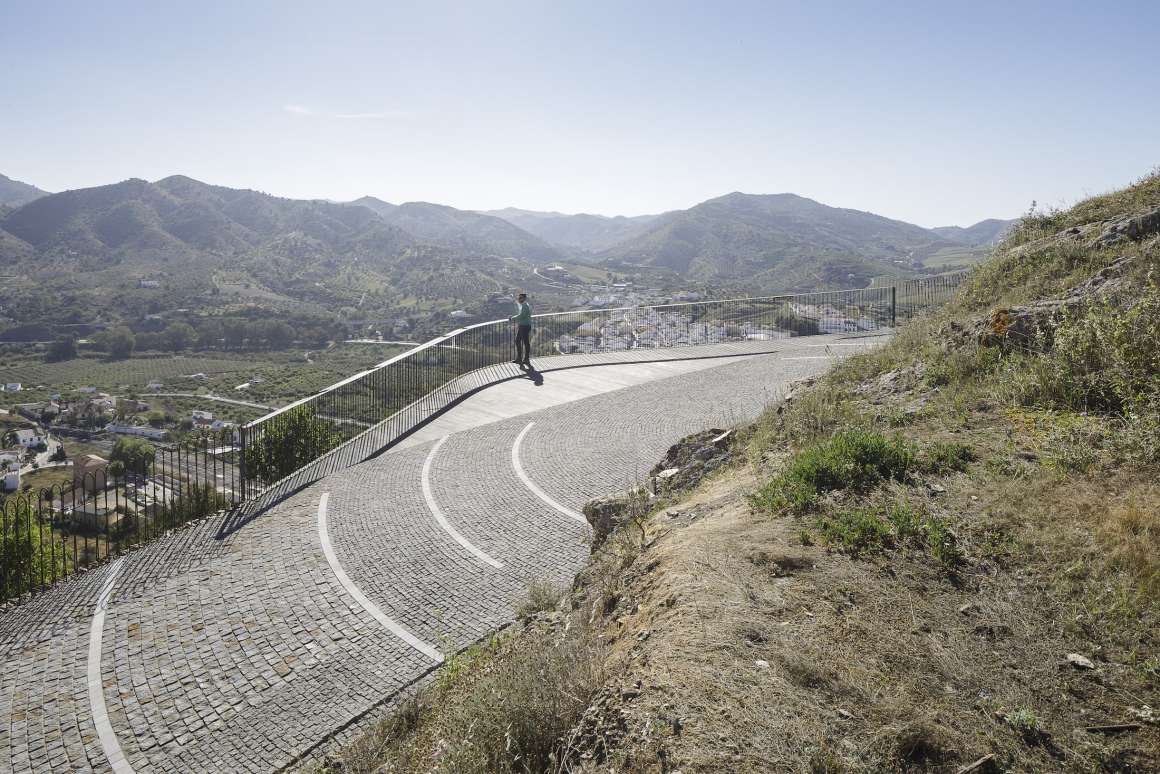
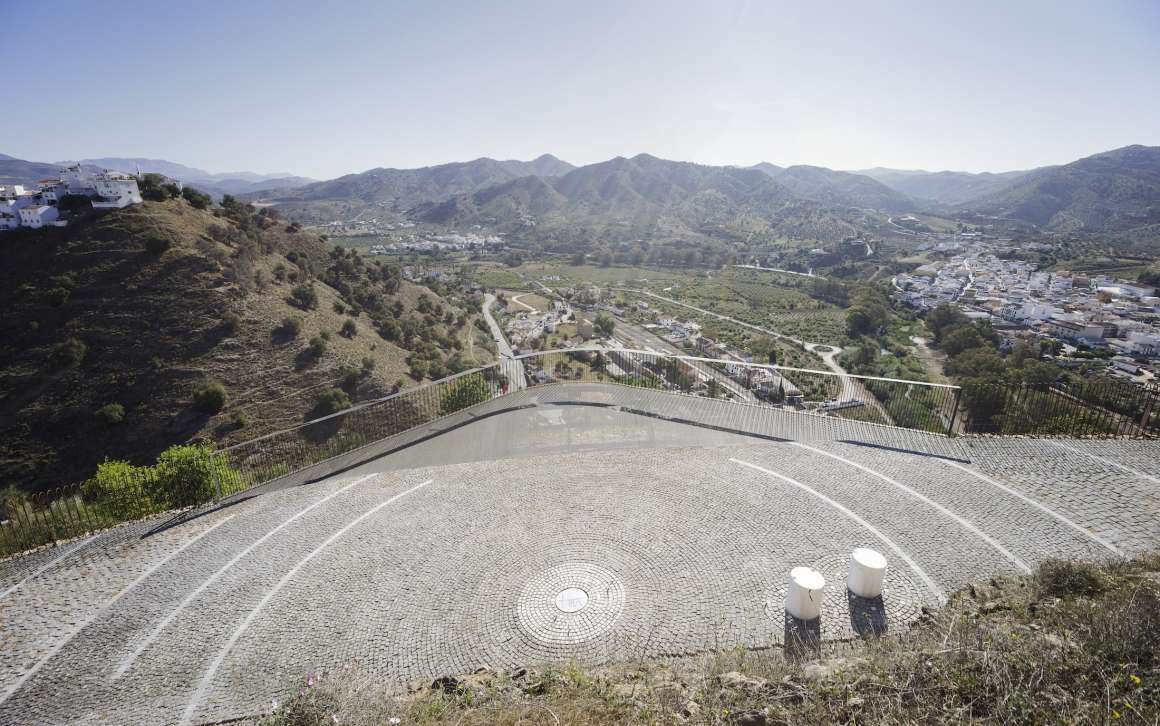
更新之前的环山道并没有得到良好的保护,面朝外围风景的护栏被漆成了红棕色。现在的环山道路被建造成一条石头地毯,护栏的设计在构思上考虑到了“消隐”,弱化了实体在视觉上带来的阻隔感。护栏的下部采用棕色砂岩石笼制成,金属栏杆上氧化的颜色与山的颜色相衬;护栏的上半部是通透的,不会阻挡空气的流通,形成了一个几乎隐形的边界,人们可以透过中间的空隙眺望远处的风景。
The path was in a bad conservancy condition and the wall facing to the views painted in brown salmon colour. We have built the pavement as a stone carpet and the wall has been conceived looking for its “invisibility”. The lower part of the wall has been made in brown sandstone gabions with the colour of the hill, the metallic bars show their oxidation colour as well as stones do. The upper part of the balustrade, empty, makes a nearly invisible limit which alouds looking through the far landscape.
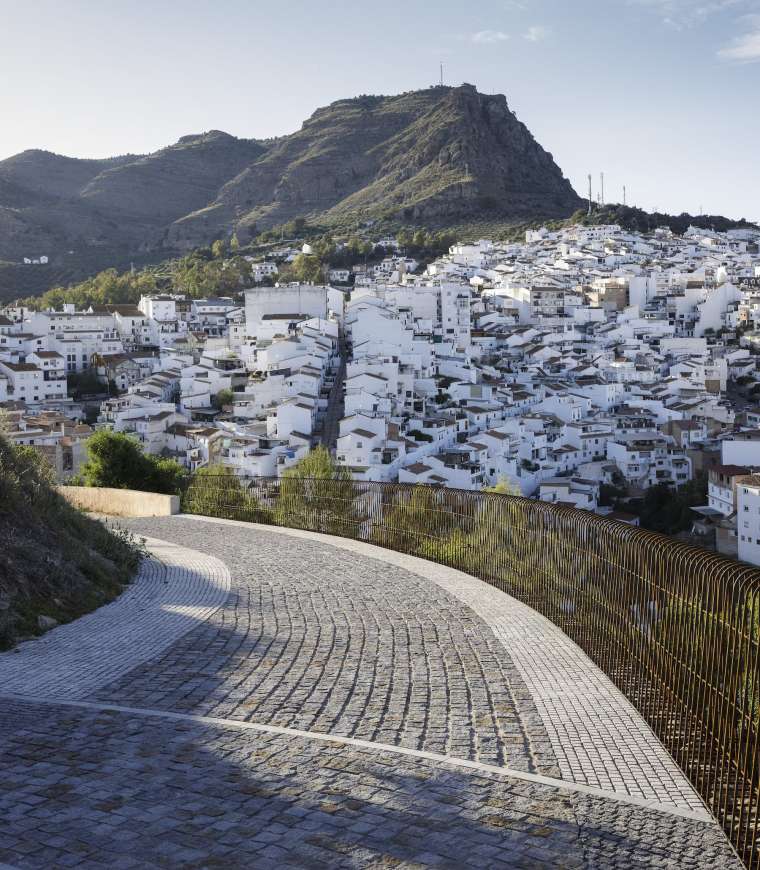
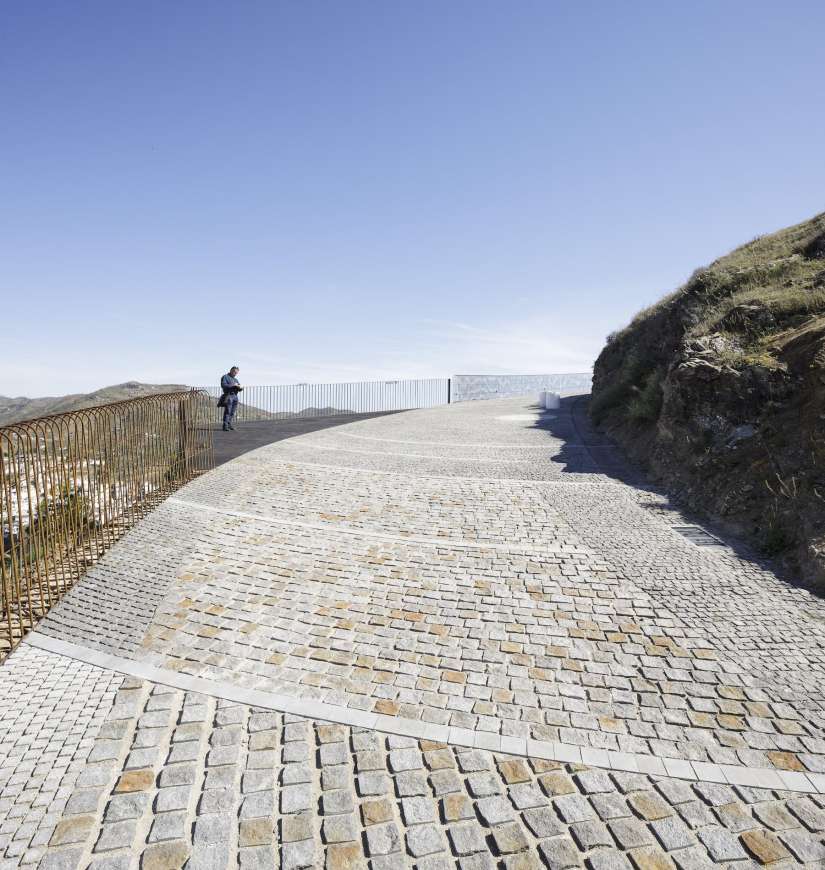
▼护栏的上半部是通透的,不会阻挡空气的流通,形成了一个几乎隐形的边界,人们可以透过中间的空隙眺望远处的风景 The upper part of the balustrade, empty, makes a nearly invisible limit which alouds looking through the far landscape.
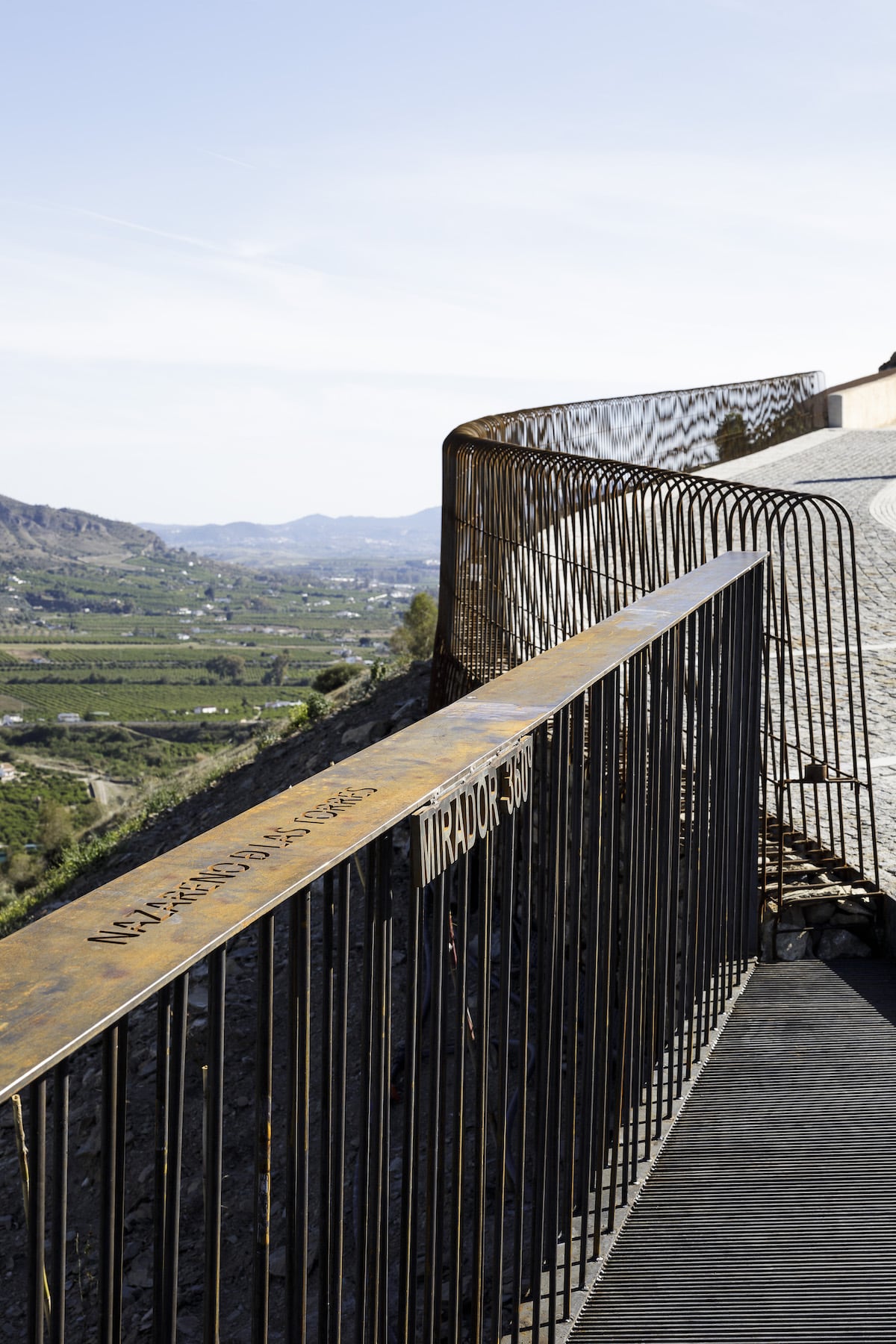
地面的铺装采用不同尺寸、纹理和暗度的花岗岩铺路石。中央的“地毯”选用的是中等大小的、粗糙的深色方形石头,两侧则是平坦的小铺路石。“地毯”通往一个圆形波浪状的暗色铺装区,中心有一块圆形大理石,这里便是“苦路”第八站的标识点。附近两个圆柱形的座椅模拟了圣经中的场景,像是两个来自耶路撒冷的女人在去加略山的路上,去安慰耶稣。
The vibrating floor is defined thanks to the different sizes, texture and darkness of the paving stones of granite. The central “carpet” is done by mid size squared, rough and dark stones. It is flanked by small and flat paving stones. The carpet leads to a dark pavement area geometrized in circle waves whose epicentre is a circled piece of marble which points out the 8th stop of the via crucis. Close to it, two cylindrical seats show their impact on pavement, symbolizing the biblical scene where two women from Jerusalem comforted Jesus on its way to the Calvary.
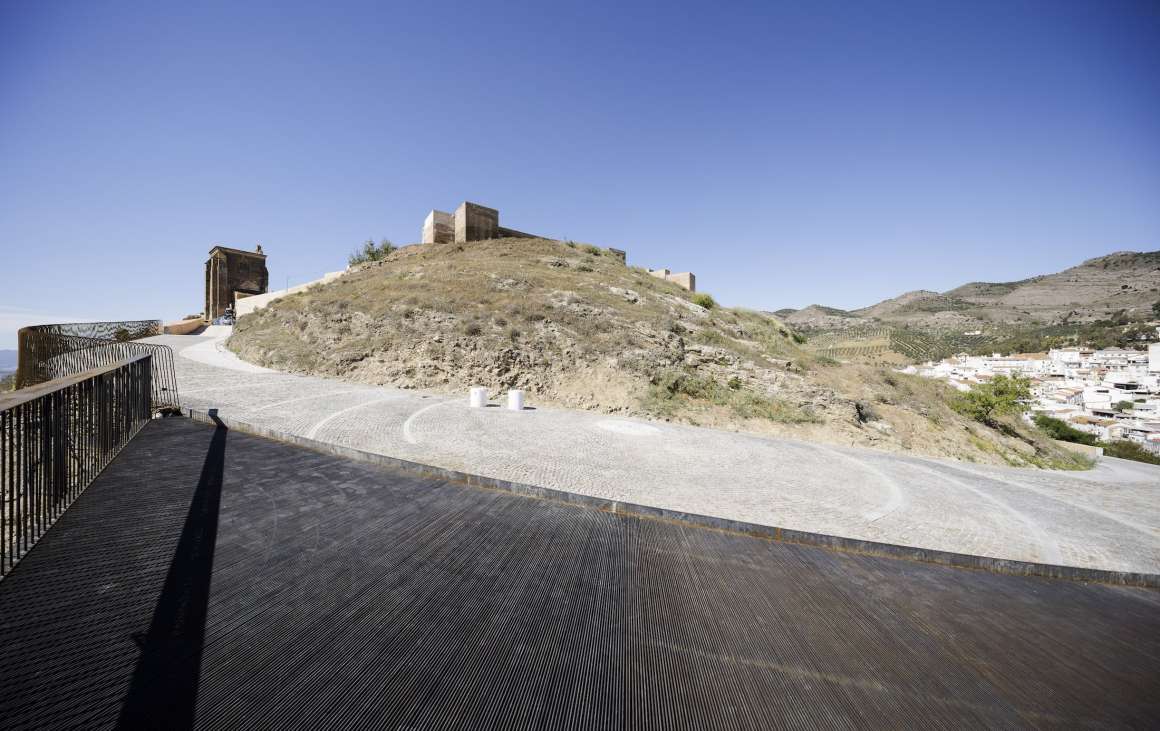
▼“苦路”第八站的标识点圆形大理石,以及模拟了圣经中场景的两个圆柱形的座椅 A circled piece of marble which points out the 8th stop of the via crucis, and two cylindrical seats that symbolize the biblical scene.
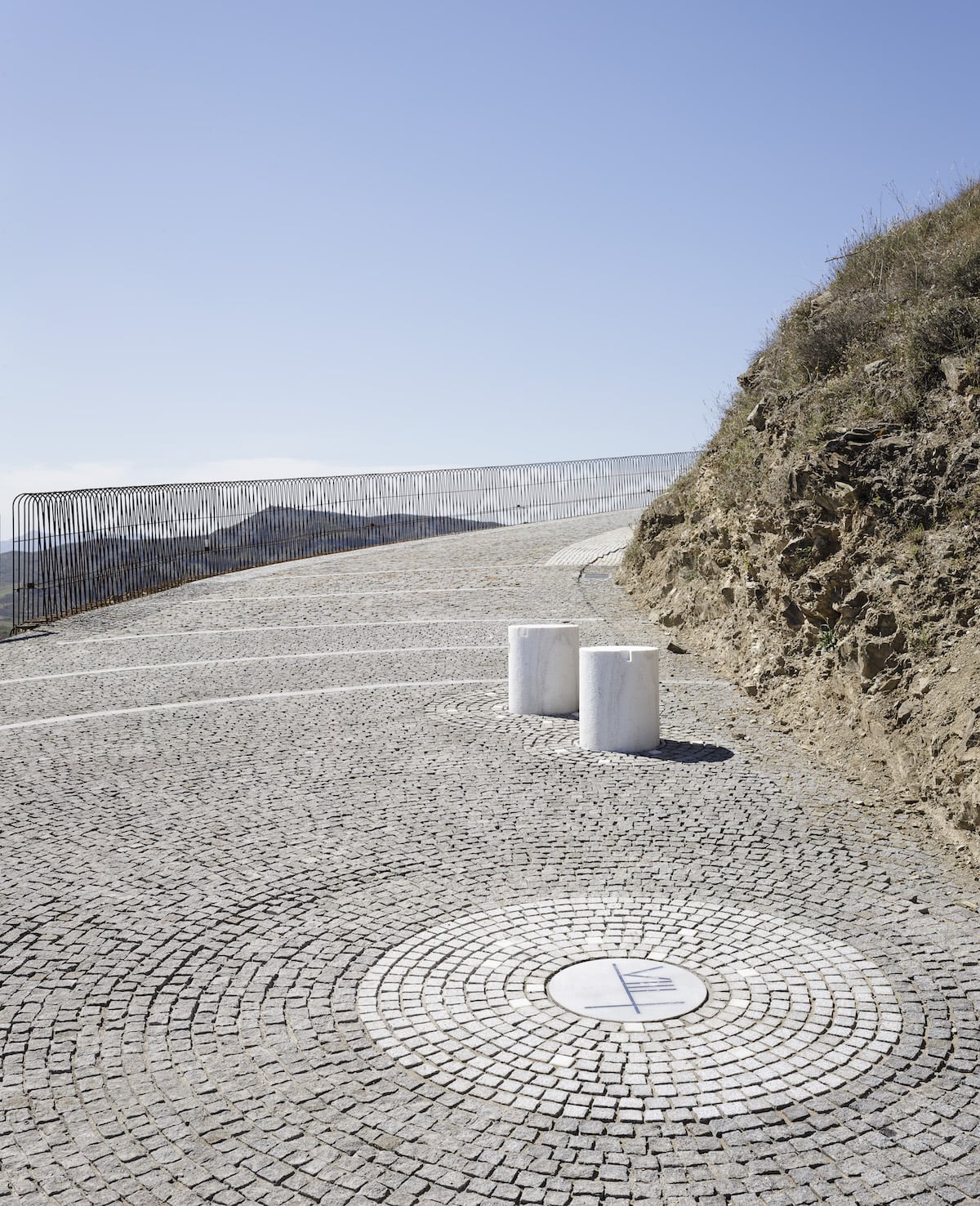
观景台是环山路上的一个驿站,是一个沉思之地,一个有关文化景观的讯息点。它的地面由金属板组成,通透中带着韵律感。护栏由细的垂直栅栏制成,扶手上的镂空文字阐述了相关的历史时期、重要任务和其他游客感兴趣的信息,悬在空中的文字则指出了特定景点的所在之处。
The viewpoint is a stop on the way, a place for contemplation and an information point of the cultural landscape. Its floor is made of metallic plates creating a vibrating transparency. The balustrade is made by thin vertical bars supporting a width handrail which contains perforated an aerial texts. Perforated ones indicate historical periods, important persons or interesting data for the traveller, and the aerial ones point out special places of the landscape.
▼观景台的地面由金属板组成,通透中带着韵律感 The viewpoint’s floor is made of metallic plates creating a vibrating transparency.
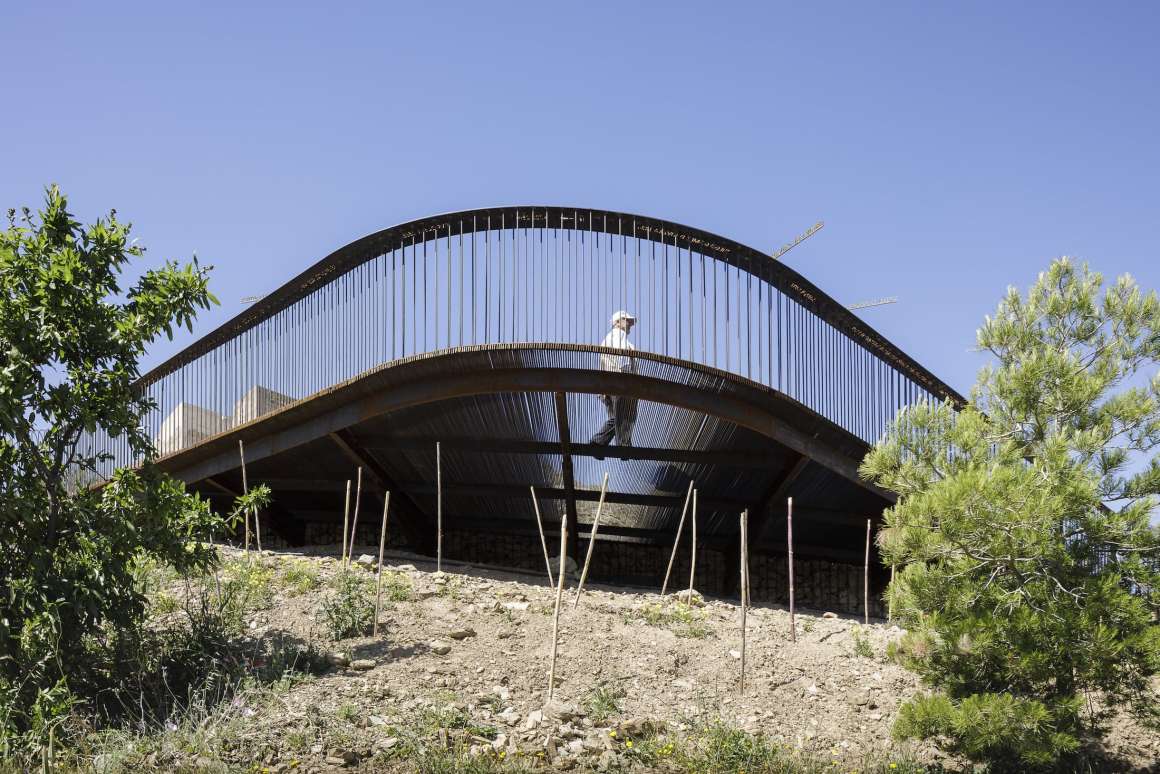


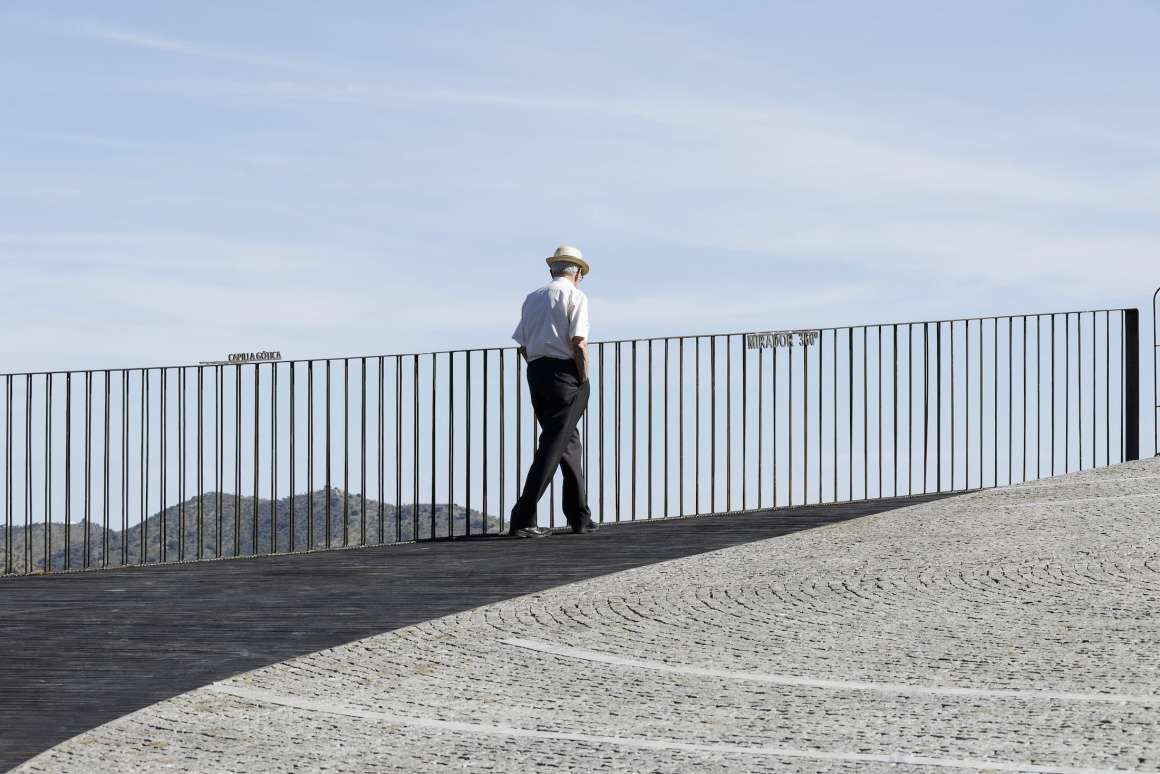
▼扶手上的镂空文字阐述了相关的历史时期、重要任务和其他游客感兴趣的信息,悬在空中的文字则指出了特定景点的所在之处 Perforated aerial texts indicate historical periods, important persons or interesting data for the traveller, and the aerial ones point out special places of the landscape.



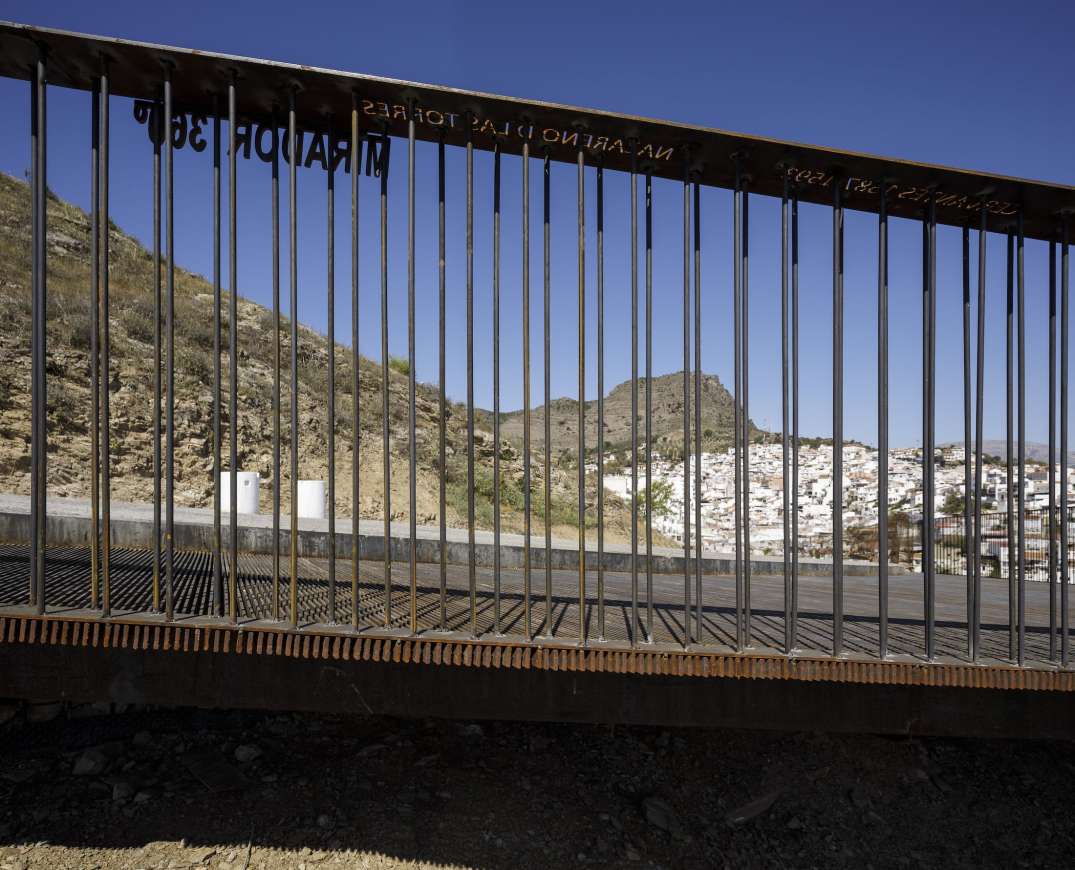
山坡上的部分荒地已经得以利用,设计工作主要集中在坡度较低的地方,那里种植了大量的低维护灌木、薰衣草和山柑属植物。
日落时分,通往城堡的道路上会亮起小地灯,带来一种节奏感。在复活节期间,护栏里会摆放有蜡烛。设计师希望能抓住景观的精髓,以新的方式引导游客去感受阿洛拉的历史景观,360º观景台促使当地的历史景观更加凸显其价值。
We have recovered some abandoned areas of the slope. Our work has focused on the lower part of the slope where there have been planted low maintenance bush masses; lavender, lavandula, and caper, capparis spinosa.
At sunset, the way to the castle is marked by a rhythm of small lighting square pavement, placed between the stone ones. During Easter acts, there will be candles inside the balustrade. We would have liked having captured the essence of landscape and having shown to the traveller a new way of feeling the historical landscape of Álora. The path and the viewpoint underline the landscape making its values emerge.
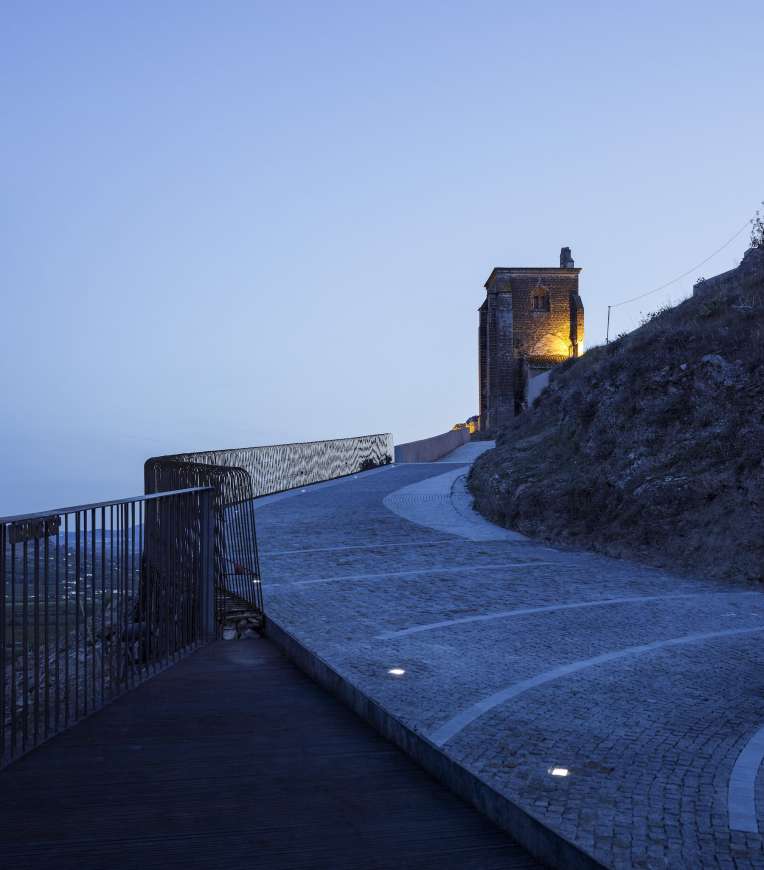

▼观景台平面图 Plan

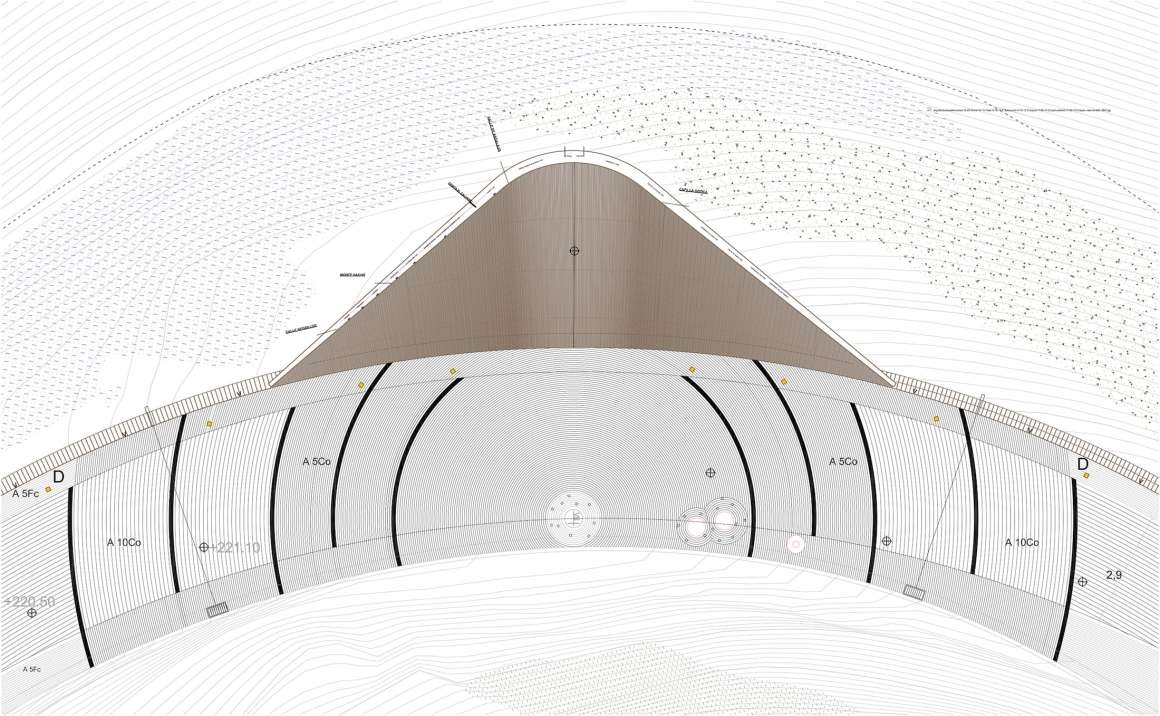
▼立面图 Elevation

▼剖面图 Section
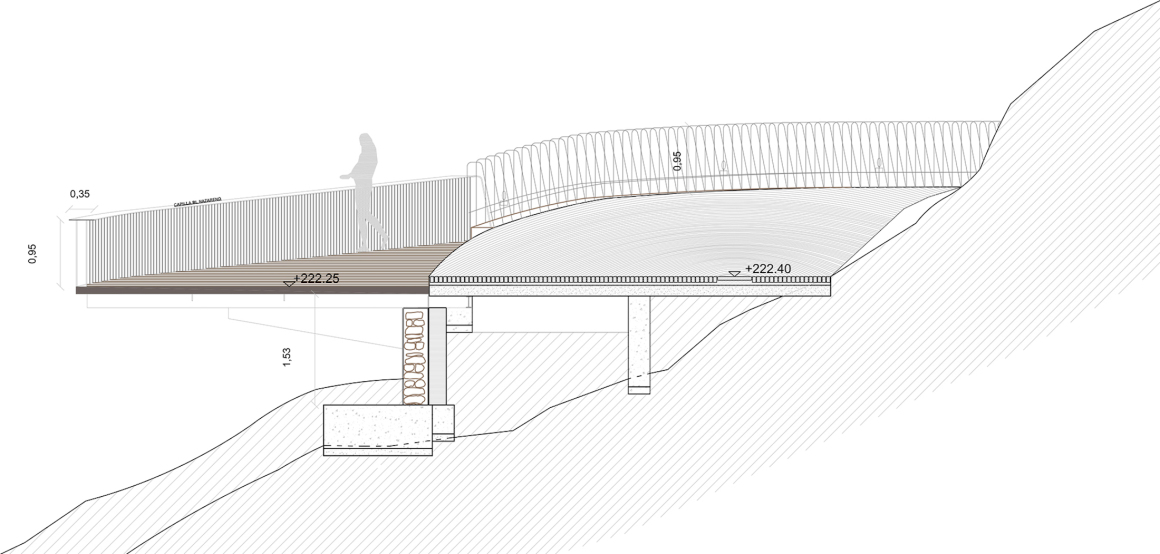
▼设计手稿 Sketches
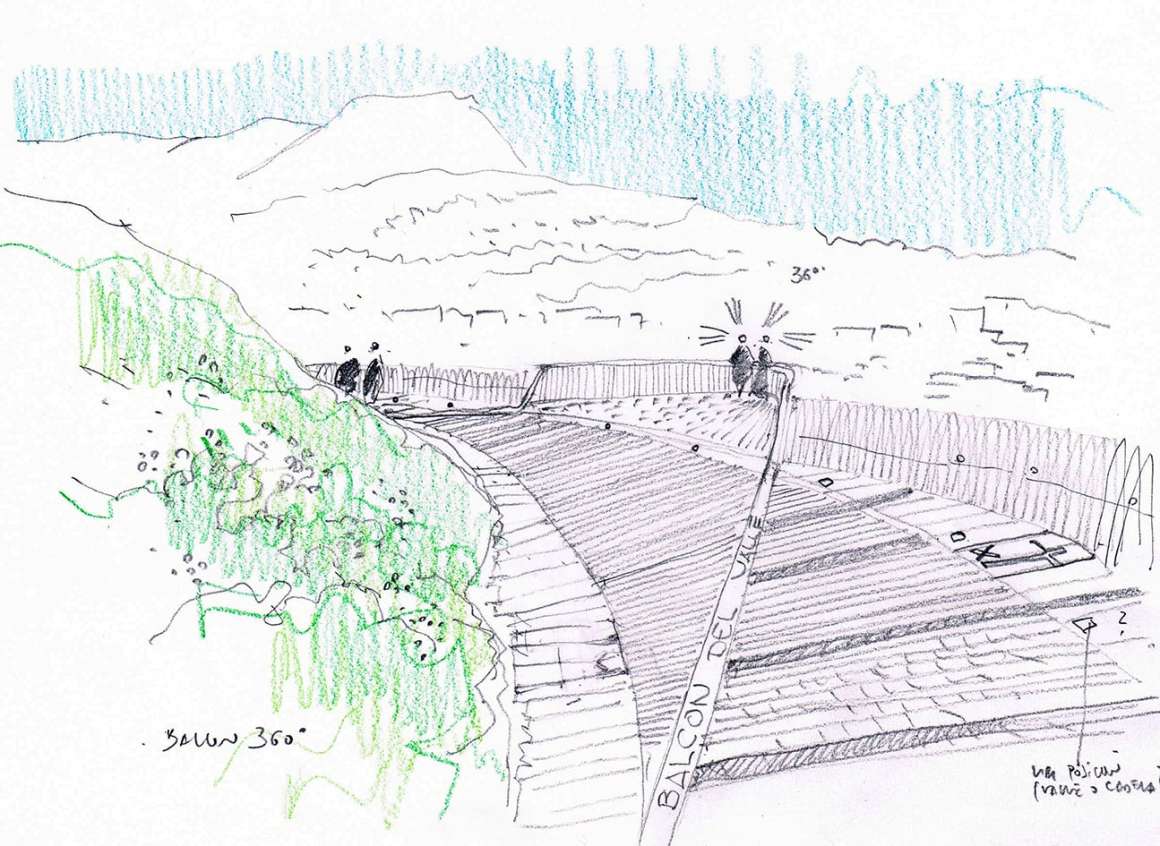
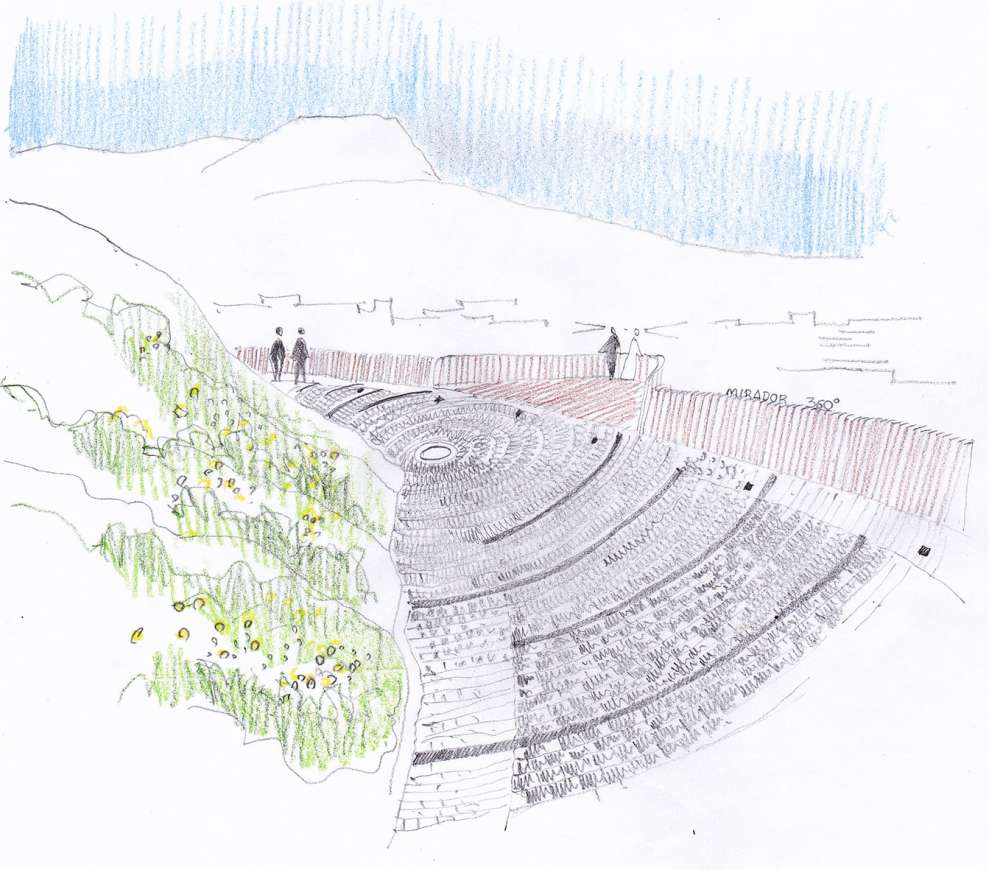

建筑设计:WaterScales arquitectos(Carmen Barrós Velázquez & Francisco J. del Corral del Campo)
技术测量:Antonio Montes Sáez
花园与景观:生物学家Ana Ibáñez Fernández
结构:土木工程师Jesús Hernández Martí
安装:工业设计师Ingeniería Vargas. Esteban Vargas y José Manuel Fernández;土木工程师Ricardo Rueda García
助理:
建筑师Javier Golbano Gómiz
建筑师Álvaro López Camino
建筑师Jorge López González
建筑师Daniel Marcos Ruiz
建筑师Belén Muñoz de la Torre Calzado
建筑师Francisco Ortega Ruiz
建筑师Felipe Pérez García
建筑师Patricia Prados Pérez
建筑师Víctor Campoy Martín
建设:I.M. Instalaciones y Obras S.A. (阿洛拉)
开发商:阿洛拉市议会
历史信息支持:阿洛拉考古博物馆馆长María José Sánchez Rodríguez
考古:马拉加考古工作室
摄影:Fernando Alda
Architects: WaterScales arquitectos (Carmen Barrós Velázquez & Francisco J. del Corral del Campo)
Technical Surveyor: Antonio Montes Sáez
Garden and landscape: Ana Ibáñez Fernández, Biólogist
Structures: Jesús Hernández Martí, Civil Engineer
Installations: Ingeniería Vargas. Esteban Vargas y José Manuel Fernández, Industrial Engineer, Ricardo Rueda García, Civil Engineer
Assistants:
Javier Golbano Gómiz, architect
Álvaro López Camino, architect
Jorge López González, architect
Daniel Marcos Ruiz, architect
Belén Muñoz de la Torre Calzado, architect
Francisco Ortega Ruiz, architect
Felipe Pérez García, architect
Patricia Prados Pérez, architect
Víctor Campoy Martín, architect
Builder: I.M. Instalaciones y Obras S.A. (Álora)
Developer: Excmo. Ayuntamiento de Álora
Historical assistance: María José Sánchez Rodríguez, Director Archaelogical museum, Álora
Archaeology: Taller de investigaciones arqueológicas, Málaga
Photograhs: Fernando Alda
更多 Read more about: WaterScales arquitectos




0 Comments